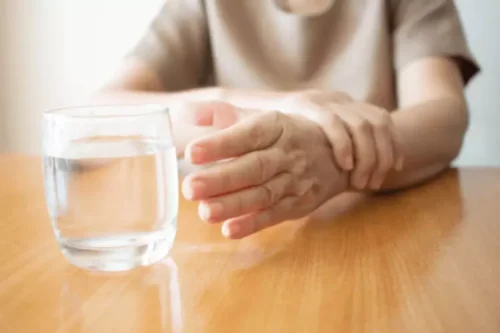
Think of a sandy beach, or a fond memory, such as your child’s first steps or time spent with friends. You can learn to manage your problems without falling back on your addiction. When you’re confident in your ability to quickly de-stress, facing strong feelings isn’t as intimidating or overwhelming.

Risk factors
There was no horrific or overt abuse, but emotional wounds inflicted by hurtful messages and ongoing criticism created an accumulation of low-level (or “small t”) traumas. After all, “normal” families are families we just don’t know that well, and everyone is wounded to varying degrees. These injuries may be visible on the outside but most often they are internal and hidden. And sometimes, people learn to deal with the pain of their wounds, as well as other life stresses, through the use of alcohol and/or other drugs.
Engaging in therapy or counseling
Ultimately, embracing the nuances of each individual’s journey, TTM and MI provide a comprehensive framework for clinicians and individuals alike to navigate the intricate terrain of addiction recovery. Brains are plastic—they adapt to experience—and people can change and grow, develop an array of strategies for coping with life’s challenges and stressors, find new means of satisfaction and reward, and negotiate life ahead. Millions of people do, whether they were once compulsive users of opiates, alcohol, or gambling.
The Stages of Change
Detoxification alone without subsequent treatment generally leads to resumption of drug use. • Connection—being in touch with others who believe in and support recovery, and actively seeking help from others who have experienced similar difficulties. Contemplation is the stage in which individuals become aware of the problems caused by their addiction successful drug addicts and are considering change. Although they may not fully commit, they weigh the costs and benefits of making a shift. I started drinking alcohol in sixth grade, added marijuana in seventh grade, pills (barbiturates, benzodiazepines, and opioids) in eighth grade, LSD in tenth grade, cocaine in eleventh grade, and heroin in twelfth grade.
- Your body has acclimated to quitting drinking over the past couple of years.
- The change destabilizes the adaptation the family has made—and while the person in recovery is learning to do things differently, so must the rest of the family learn to do things differently.
- Recovery is further defined by Kelly And Hoeppner in 2014, who state recovery is a dynamic process characterized by increasingly stable remission resulting in and supported by increased recovery capital and enhanced quality of life.
- Addiction Resource aims to provide only the most current, accurate information in regards to addiction and addiction treatment, which means we only reference the most credible sources available.
- This may include cognitive behavioral therapy (CBT), in which the patient learns to recognize problematic thinking, behaviors, and patterns and establish healthier ways of coping.
- Change takes time, and it’s normal to experience cravings, mood swings, and moments of doubt.
- The principle of equifinality states that there can be many different pathways to a common developmental endpoint.
- The example set by others who have successfully traversed the recovery terrain can instill hope and optimism, another active recovery ingredient.
They also value having role models of recovery and someone to call on when the recovering self is an unsteady newborn. Whatever the stress relief that comes from being in a group, many others are not comfortable with the religiosity, the steady focus on the dangers of relapse rather than on growth, or the subscription to powerlessness of AA and NA. Data show that the programs are helpful for some but not for everyone. Many people believe that they are powerless to change their own addictive behavior, and often it is a belief that keeps people addicted. The evidence shows that every day, people choose to recover from addiction on their own. One way or another, they learn and deploy a set of skills that help them get through the strong cravings and urges of the difficult early stages of recovery.

Best Online Therapy Platforms We Tried and Tested
- Shame is an especially powerful negative feeling that can both invite addiction in the first place and result from it.
- Medication may also be used to manage withdrawal symptoms and cravings.
- • Empowerment—finding the wherewithal to cope with recovery and the challenges of life, which breeds a sense of self-efficacy.
- Addiction develops over time, in response to repeated substance use, as the action of drugs changes the way the brain responds to rewards and disables the ability to control desire for the drug.
- For treatment to be successful, you’ll first need to resolve your underlying issues.
He states that research shows that family-based support for addiction recovery is critical but often not obtained. Yet sustained, personalized recovery services are essential because treatment is just the first step toward growth and finding a high quality of life without substances. Relapse should be considered a sixth stage, a nearly inevitable part of the process of change. After a return to old behaviors, people make a decision to resume their active strategies of coping, facilitating remission and recovery. Recovery from addiction is a developmental learning process, and people often stumble as they progress along a new and unfamiliar path. This stage of change can present new challenges as a person navigates life after treatment or without the regular support they may have had previously.
- The goal, Rutherford explains, is to construct a “recovery story” built from both qualitative and quantitative data for each individual seeking support.
- It is a path that millions of individuals worldwide embark upon, seeking to reclaim their lives from the clutches of substance abuse.
- Afterward, committing to change can look like working with a professional in identifying specific goals, coming up with a specific plan to create change, following through with that plan, and revising goals as necessary.
- Still, some people in the addiction-treatment field reserve recovery to mean only the process of achieving remission and believe it is a lifelong enterprise of avoiding relapse.
- At the very least, self-care should include sleep hygiene, good nutrition, and physical activity.
- One influential framework guiding this process is the “Transtheoretical Model of Change” (TTM), developed by Dr. James Prochaska and Dr. Carlo DiClemente.

Peers can provide wisdom obtained from common experience and offer supportive feedback. They are a source of judgment-free support and understanding that are essential for building confidence and self-esteem. Because your recovery affects your entire life, it needs to be holistic, encompassing other aspects of your life, such as housing needs, employment, education, social networks, and family and community interaction. If you are – or have been –in recovery, you know that it is a complex and very individualized process. But there are some common components and common strategies that can be helpful to everyone in recovery.

The Brain in Recovery looks at how the brain changes as individuals enter and progress through addiction recovery, exploring the connections between neurobiological processes and recovery-related behaviors. The processes of neural plasticity and neural toxicity that deeply entrench the behaviors of substance use in the brain can make those behaviors difficult to change. Nevertheless, data bear out that most people who meet the clinical criteria for an alcohol or other drug use disorder achieve full recovery. In fact, the latest figures from the National Survey on Drug Use and Health indicate that among those who had an alcohol or drug problem, the remission rate is approximately 75 percent. It is now well known that the repetition of rewarding behaviors produces changes in brain function and structure that facilitate habits and, for some, sustained compulsivity and addiction. Like other complex illnesses and disorders, addiction is multifactorial, resulting from a combination of genetic, social, psychological, and environmental forces.
Stage 3: Maintaining Abstinence

